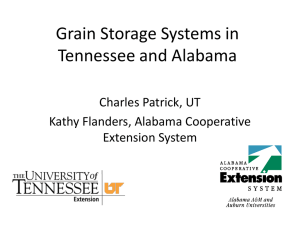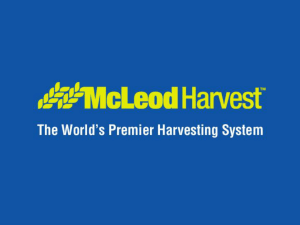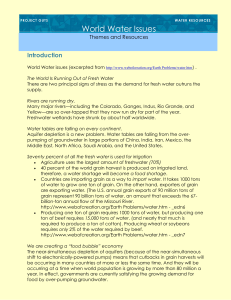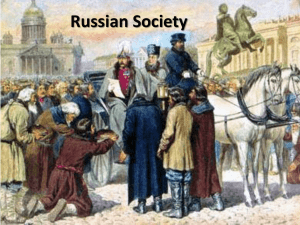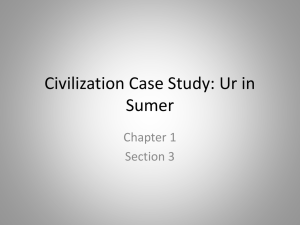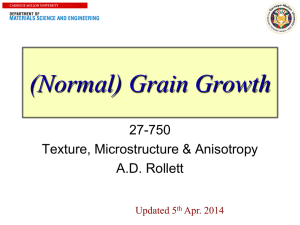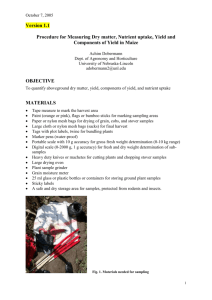Slideshow in PowerPoint
advertisement
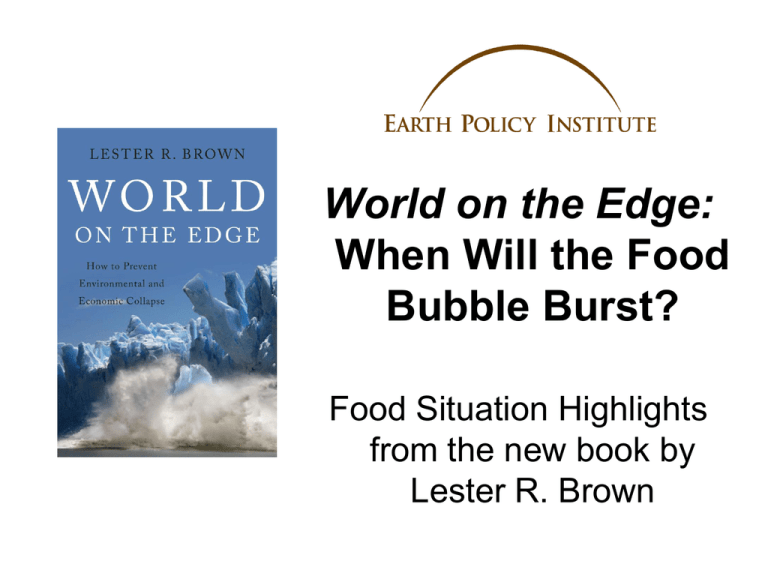
World on the Edge: When Will the Food Bubble Burst? Food Situation Highlights from the new book by Lester R. Brown 2010 Russian Heat Wave Statistics: • Average Moscow July temperature: 14 °F above the norm • Number of fires starting every day in early August: 300-400 • Forest damage and restoration cost estimate: $300 billion • Total death count from heat wave and air pollution: > 56,000 • Drop in the Russian grain harvest: down 40% to 60 million tons from recent annual harvests of 100 million tons Fallout: • In 2009, the Black Sea region contributed roughly ¼ of world wheat exports, but Russia has banned grain exports entirely through mid-2011. • Heat and drought decimated grass and hay growth, prompting the government to release 3 million tons of grain to supplement cattle feed. Still, farmers have had to cull herds. • World wheat prices saw a 60% increase over 2 months. Photo Credit: iStockPhoto Nightmare Scenario • 40% drop in Russian grain harvest reduced world grain stocks from 79 days of consumption to 72 days 120 100 Earth Policy Institute - www.earth-policy.org • World grain stocks would plummet to record-low 52 days – well below the level that preceded the tripling of grain prices in 2007-08 140 80 Days • But what if the heat wave centered on Chicago, and the much larger U.S. grain harvest dropped 40%? World Grain Stocks as Days of Consumption, 1960-2010 60 40 20 0 1960 1970 1980 1990 2000 2010 Source: USDA Would likely result in unprecedented food price inflation and food riots in scores of countries, toppling weaker governments. 2020 Food Prices on the Rise Corn Prices (CBOT) Grain and soybean prices are fast approaching their peaks of 2007-08. Wheat Prices (CBOT) Soybean Prices (CBOT) Source: futures.tradingcharts.com Farmers Being Squeezed • Supply Tightening – Little unused arable land, loss of cropland to development and industry – Overpumped aquifers, falling water tables, and over-allocated rivers limit irrigation expansion – Slowing growth in crop yields – Soils eroding, deserts expanding due to overgrazing, overplowing, deforestation • Demand Growing – 219,000 more people at the dinner table each night – 3 billion people desire to move up the food chain and eat more grain-intensive livestock products – Food vs. Fuel: Expanding biofuel production means that cars and people compete for crops Photo Credit: Yann Arthus-Bertrand Precarious Global Food Situation • Past food price spikes were event-driven, typically resolved with next harvest World Grain Production and Consumption, 1960-2010 2,500 1,500 Production Consumption 1,000 500 0 1960 1970 1980 1990 Source: USDA 2000 2010 Earth Policy Institute - www.earth-policy.org Million Tons 2,000 2020 • 2007-08 spike and the one building in 2010-11 are trenddriven • Add in carbon emissions that are raising the global thermostat: – Each 1°C rise above optimum during the growing season drops grain yields 10% – Melting mountain glaciers mean falling harvests in Asia – Rising sea level will inundate rice-growing river deltas The world is only one poor harvest away from chaos in world grain markets. Photo Credit: iStockPhoto / Tobias Helbig When A Bubble Bursts: Saudi Arabia Wheat Production and Consumption in Saudi Arabia, 1995-2010, with Projection to 2013 3,500 3,000 Consumption 2,500 Thousand Tons • Became self-sufficient in wheat by tapping a non-replenishable aquifer to irrigate the desert • In early 2008, announced the aquifer was largely depleted • Population of nearly 30 million could be entirely dependent on imported grain by 2013 2,000 1,500 1,000 Production 500 0 1995 2000 2005 2010 2015 Source: USDA; EPI Photo Credit: NASA Water-Based Food Bubbles Countries Overpumping Aquifers in 2010 Country Saudi Arabia is the first country to publicly project how overpumping will shrink its grain harvest, but millions of people around the world are fed by overpumping aquifers. Population Millions Afghanistan China India Iran Iraq Israel Jordan Lebanon Mexico Morocco Pakistan Saudi Arabia South Korea Spain Syria Tunisia United States Yemen 29 1,354 1,214 75 31 7 6 4 111 32 185 26 49 45 23 10 318 24 Total 3,545 Source: EPI with population data from UNPop Photo Credit: NASA Will China’s Food Bubble Be Next? Soybean Production and Consumption in China, 1964-2010 • 130 million Chinese people are fed with grain produced by overpumping groundwater • Vast amounts of cropland being paved for fastgrowing auto fleet • China gave the world the soybean; now imports 4/5 of the soybeans it consumes, largely to feed livestock • Long self-sufficient in grain, China has begun to import wheat and corn within the last year 70 Consumption Million Tons 50 40 30 20 Production 10 0 1960 1970 1980 1990 Source: USDA 2000 2010 Earth Policy Institute - www.earth-policy.org 60 2020 If China comes into the world market for grain in a major way, as it has for soybeans, it will turn to the United States, the world’s largest grain exporter. American consumers will be competing with 1.4 billion Chinese for the U.S. harvest. Learn how the world can address its food bubble and prevent environmental and economic collapse in World On the Edge. For more information, including supporting data and a free download of the book, visit www.earth-policy.org/books/wote




